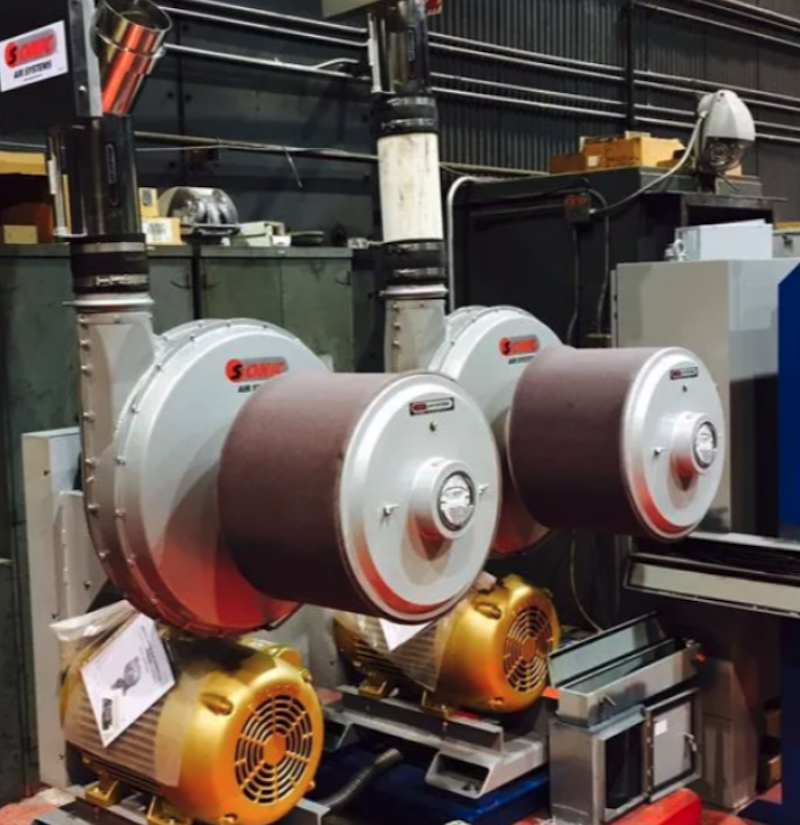In several manufacturing processes, industrial centrifugal blowers are very essential elements since they supply the environment with adequate air supply to cool, dry, provide ventilation, and move materials.
Due to their working under harsh conditions, these machines are likely to wear, change in their performance and sometimes fail. In case of problems, the efficiency of production may decrease and the use of energy may grow.
Learning how to troubleshoot and only solve the most common issues is the only way to ensure that everything works smoothly and the equipment lasts as long as possible.
An industrial centrifugal blower is a core element of an air-handling system in most facilities, and this factor implies that simple problems can cause serious inconveniences.
Troubleshooting is an essential aspect of routine maintenance, whether the blower is drying a line of high-velocity air or is supporting HVAC systems or it is being used in some specialized application, which requires the provision of vacuum performance.
Depending on early identification of the indicators of trouble would lead to cost-reduction of downtime and avoidable repairs.
Determining Unusual Noise and Vibration
Abnormal sound and undue vibration are other most prevalent issues with centrifugal blowers. These issues often stem from:
- Disproportionate or broken impellers
- Unattached mounting bolts or hardware
- Worn bearings
- Blower misalignment with the motor
- Debris entraps within the blower housing
To remedy these issues, one of the first things the technicians ought to do is turn-off the equipment and check the impeller to identify its accumulation, cracks, and warping. The problem can just be solved by cleaning or replacing the impeller.
Check of bearings should be done, and it must be checked as alignment between the blower and the motor. Should the vibration continue, then a professional balancing service would be needed to put it back on track.
Cover-up Energy Wastage
In case the operating costs are increasing without warning, the blower can be experiencing:
- Obstructed breathing which causes the motor to strain more
- Wrong impeller size or speed adjustments
- Bearing and mechanical wear
- Lateral incompatibility with additional drag
The use of energy can usually go back to normal when the obstructions to airflow have been cleared and the components are in proper alignment.
Checking all the moving parts and speed controls can also help in regained efficiency. Periodical greasing of bearings: This helps to eliminate friction and the amount of power simply used without purpose.
Popularity Prevention to Prevent Most Problems
The best method of preventing recurring problems is through regular maintenance. The measures which can be taken to prevent include:
- Arranging regular testing of vibration and noise
- Filter, intake area and duct system cleaning
- Conducting alignment inspections
- Measurement of amperage and temperature in the motors
- Prophylaxis replacement of worn parts
Regular inspections make it unlikely that an equipment will suddenly fail and extend the working durability of the equipment. On many occasions, technicians working with a systematic maintenance program do not have as many inconveniences and enhance their performance.
Contradicting problems with industrial centrifugal blowers are difficult to troubleshoot in order to have continuous and efficient operations in industrial environments.
Having the awareness of the frequent issues like noise, vibration, overheating and airflow loss, the operators can act promptly to diagnose and rectify them.
Frequent inspections, maintenance schedule in place and observation of performance modifications are some of the measures used to ensure that the blower will run without any problems.
Through proactive care, the facilities would save on the expensive downtime and the equipment would have a long lifespan.

